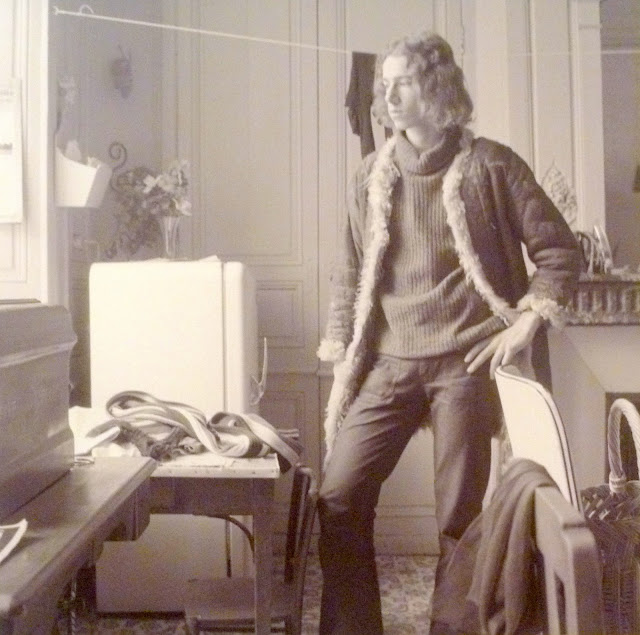Yannis Tsarouchis - Studies for 17 Themes
at the Benaki Museum, Pireos Avenue Annex.
A member of the Armos Art group which was established in 1949, Tsarouchis' took two different directions: towards the orientalist and sensualist with a strong influence from Matisse, and towards the ancient Greek ideal as expressed by the Renaissance and Baroque movements. His art is consequently a synthesis of the technique he learnt from the Impressionists whilst he was in Paris in the 1930s. It also comprises elements of classical Hellenic sculpture and vase painting but also includes elements of the Byzantine art that represents the oriental side of the Greek aesthetic. Present in his work are also traces of folk art, as in weaving and shadow theatre. These constant references to Greece's past and present, from ancient sculpture to folk art, formed his vision, reflecting the complexities of Greece's identity. They were blended together because of his desire to express the many ingredients that comprised 'Greekness'.
His depiction of sailors, often painted in the nude which abound with homoerotic references was seen as controversial and as demeaning to the Greek male and were taken down by censors. Similarly, some of his paintings were seen as iconoclastic and condemned by the powerful Greek Orthodox Church.
Much of his early work was designed for the theatre and the opera. He took this work up again while in exile in 1967 while waiting out the years of the military dictatorship and designed sets for productions in La Scala, Covent Garden as well as the Avignon Festival. On return to Greece in the late 1970s he designed a set for Franco Zeffirelli's Medea at the Epidaurus theatre.
The exhibition is presented through studies and variations aiming to reveal part of the process that the artist followed to complete his paintings and as such was very interesting: a blend of his allegorical winged figures, his representations of the months and the seasons, as well as his neoclassical coffee shops.
I cannot do justice to the exhibition in this post: there is no exhibition catalogue, and we were not allowed to photograph, so the photographs I did manage to take are very limited.
First Portrait of Despina, aged 18, in Maroussi, 1967
Despina, photographed by Tsarouchis in Paris in the 1970s
Despina, photographed by Tsarouchis in Paris in the 1970s
Despina Wearing a Pink Dress, Athens 1977
Despina with Coral Necklace and Fur Coat, France 1974-75
Portrait of Despina, Paris 1970
'In order to convey the personality of the sitter I was interested in depicting, I used every technique that was known to me. My objective was not to imitate the Fayum, but to portray living characters and their mystery. The portrait of Despina was based on a study in oil'.
Dominique, photographed by Tsarouchis, Chartres, France in the 1970s
Study for Spring (Dominique) Paris 1971
Study for Summer (Dominique), Paris 1971
Study for Summer (Dominique), Paris 1971
Study for Autumn (Dominique), Paris 1971
Dominique Playing Bouzouki, France, 1972-73
'This is an exercise obviously influenced by the Dutch painters and in particular Vermeer. I don't think it's a bad idea to follow a painter's style, as long as you work from life. If you work by simply imitating the paintings of the old masters, your technique might improve, but, you will lose something more valuable than technique itself'.
Kavrokefalos Coffee House, Paris, 1971.


















No comments:
Post a Comment